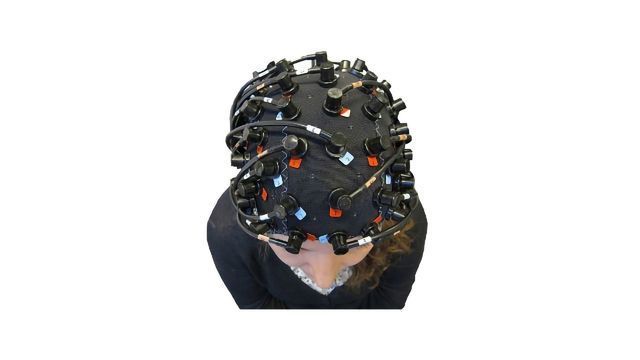Trending News
News

News
Quality Over Quantity in Recovering Language After Stroke, New Research Suggest
Research has found that intensive therapy is not necessarily best when it comes to treating the loss of language and communication in early recovery after a stroke.

News
Brain Stimulation Improves Reading Accuracy in People With Dyslexia
Restoring normal patterns of rhythmic neural activity through non-invasive electrical stimulation of the brain alleviates sound-processing deficits and improves reading accuracy in adults with dyslexia, according to a new study.

News
Older Women With Type 2 Diabetes Use Less Oxygenated Blood in Their Brain
New research suggests that the brains of older women with Type 2 diabetes do not use as much oxygenated blood as those who don't have the disease. The research is the first to point to changes in blood use in the brain as the primary reason for diabetes-related deficits in motor function.

News
Molecular Study Shows What Makes Memories So Enduring
A new study describes a newly discovered mechanism of learning in the brain shown to stabilize memories and reduce interference between them. Its findings also provide new insight into how humans form expectations and make accurate predictions about what could happen in future.

News
Fast-Firing Neurons Show Superior Synchronization
Research conducted by the Computational Neuroscience Unit at the Okinawa Institute of Science and Technology Graduate University (OIST) has shown for the first time that a computer model can replicate and explain a unique property displayed by a crucial brain cell. Their findings, published today in eLife, shed light on how groups of neurons can self-organize by synchronizing when they fire fast.

News
Poor Sleep Forecasts Alzheimer's Protein Accumulation in Later Life
What would you do if you knew how long you had until Alzheimer's disease set in? Don't despair. New research from the University of California, Berkeley, suggests one defense against this virulent form of dementia -- for which no treatment currently exists -- is deep, restorative sleep, and plenty of it.

News
Rodent Diabetes Sent Into Remission by Single Protein Injection
In rodents with type 2 diabetes, a single surgical injection of a protein called fibroblast growth factor 1 can restore blood sugar levels to normal for weeks or months. Yet how this growth factor acts in the brain to generate this lasting benefit has been poorly understood. New research has revealed some of the facts of this phenomenon.

News
Young Children, Unlike Adults, Use Both Sides of Their Brain To Learn Language
Infants and young children have brains with a superpower, of sorts, say neuroscientists. Whereas adults process most discrete neural tasks in specific areas in one or the other of their brain's two hemispheres, youngsters use both the right and left hemispheres to do the same task. The finding suggests a possible reason why children appear to recover from neural injury much easier than adults.

News
First "Plug and Play" Brain Prosthesis Helps Paralysis Patient
In a significant advance, UC San Francisco Weill Institute for Neurosciences researchers working towards a brain-controlled prosthetic limb have shown that machine learning techniques helped an individual with paralysis learn to control a computer cursor using their brain activity without requiring extensive daily retraining, which has been a requirement of all past brain-computer interface (BCI) efforts.

News
Offspring of Mice Fed Imbalanced Diets Appear "Programmed" for Obesity
Pregnant mice fed a diet high in omega-6 fats and low in omega-3 fats produce offspring that go on to exhibit “hedonic”—pleasurable but excessive—levels of consumption of hyper-caloric diets, according to researchers at Hiroshima University.
Advertisement




